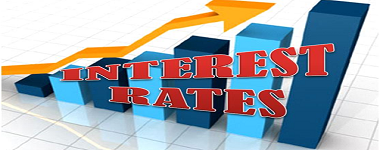Before I get into our discussion on interest rates today, it is very interesting that despite better than expected earnings, encouraging comments by the Federal Reserve and a stronger than expected employment report – stocks were unable to decisively break out of the trading range that has existed since the beginning of March.

Follow up:
Â

Importantly, despite the turmoil of the markets over the last couple of months, complacency has risen sharply in the last few weeks. This is shown by the decline of the volatility index (bottom part of the chart above) back to extremely low levels. For investors the concern is that, as discussed in Friday’s missive, May tends to be one of the weakest months of the year for stocks to wit:
“Historically, May is the 3rd worst performing month for stocks on yielding an average return of 0.27% and a median return of 0.49%. The chart below graphically depicts the disparity of monthly average and median returns.”
“May, as shown in the chart above, also represents the start of the “seasonally weak” time for stocks. As the markets roll into the early summer months, May and June tend to be some of weakest months of the year along with September. This is where the old adage of “Sell In May” is derived from. Of course, while not every summer period has been a dud, history does show that being invested during summer months is a “hit or miss” bet at best as shown in the next chart of historical returns for May back to 1900. While May’s monthly average is skewed by sharp deviations in returns during the “Great Depression,” more recent years have been primarily contained, with only a couple of exceptions, within a +/- 5% return band as shown below.”
One last point, as I discussed in “Sell In May Particularly During Mid-Term Election Years:”
“While there are some years that have posted sizable gains during the summer months, such years do not invalidate the long term statistical probabilities. As the table shows above, the average annual return from the summer months is significantly poorer than the fall and winter. To show the impact of that performance differential, I constructed the following chart which shows the growth of $10,000 invested in each of the seasonal periods.”
Now, with that background in place let’s discuss interest rates and what they are potentially telling us about the broader financial landscape.
It’s Either This Or That
I wrote recently about a survey that showed 100% of economists surveyed expect interest rates to rise in the next six months. To wit:
“Economists are unwavering in their assessment of where yields are headed in the next half year. Jim Bianco, of Bianco Research, points out in a market comment Tuesday that a survey of 67 economists this month shows every single one of them expects the 10-year Treasury yield to increase in the next six-months.”
Furthermore, there was a separate poll taken that showed 100% of economists do NOT expect an economic contraction either.
The problem is that it cannot be both. It is either this or that.
First of all, when there is a COMPLETE consensus on anything, it is very likely that something else will happen. It is one of the primary rules of market dynamics.
Secondly, interest rates are nothing other than the reflection of the supply/demand for credit. In this regard there are THREE primary drivers to move interest rates: economic growth, wage growth and inflation. This is clearly shown in the chart below.




